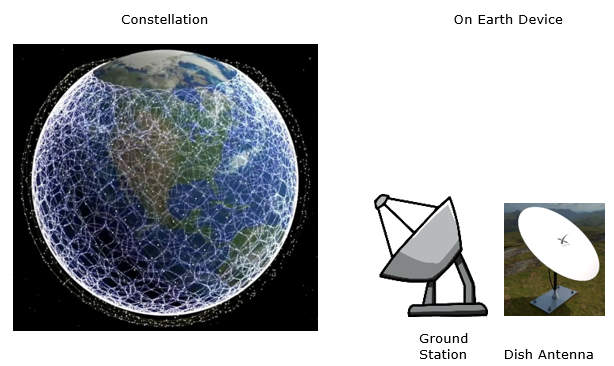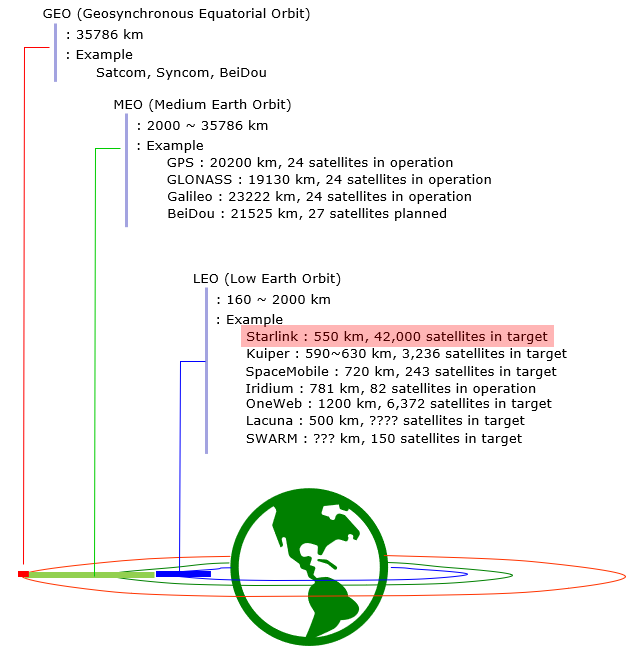|
|
||
|
Starlink is a satellite internet constellation operated by SpaceX, providing high-speed, low-latency broadband internet globally. It uses a constellation of low Earth orbit (LEO) satellites to deliver internet service, particularly to remote and rural areas where traditional internet access has been unreliable or unavailable. Users can connect to the Starlink network by setting up a small satellite dish at their location and recently (early 2024) connect to the satellite directly with regular mobile phone, which receives the signal from the satellites. The goal of Starlink is to create a low latency network in space that facilitates edge computing on a global scale Orbits and ConstellationStarlink is a satellite internet constellation operated by SpaceX, providing global coverage. The Starlink satellites orbit at an altitude of approximately 550 kilometers (342 miles) above the Earth. As of July 2023, there are 4,519 Starlink satellites in orbit, with 4,487 of them operational. The constellation is designed to deliver broadband internet from low Earth orbit, and it is the world's first and largest satellite constellation of its kind
Spectrum (Frequency and Bandwidth)Starlink supports various frequency bands for its satellite internet services. The Ka band, which ranges from 27-40GHz, and the Ku band, which ranges from 12-18GHz, are used for broadband satellite internet services. Additionally, Starlink also utilizes the V band (40-75GHz), X band (8-12GHz), and K band (18-27GHz) for its operations. The available bandwidth of Starlink satellites to user terminals is 2000 MHz in the Ku-band, and 500 MHz from the terminal to the satellite. In terms of data transmission, the ranges from 10.7-12.7GHz and 37.5-42.5GHz are used for the transmission of data from Starlink, while the ranges from 17.8-18.6GHz, 18.8-19.3GHz, and 37.5-42.5GHz are used for satellite to gateway transmissions. For uplink communications, the ranges used for sending information from the gateways back up to the satellites are 47.2-50.2GHz and 50.4-51.4GHz. The downlink communications for tracking, telemetry, and control are in the ranges of 12.15-12.25GHz, 18.55-18.6GHz, and 37.5-37.75GHz, while the uplink communications for the same purpose are in the ranges of 13.85-14GHz and 47.2-47.45GHz The maximum data rate provided by Starlink is up to 220 Mbps for download speeds. The upload speeds are typically between 5 and 20 Mbps. These speeds make Starlink a competitive option for high-speed internet, especially in rural areas or for users seeking a mobile internet option FCC[1] FCC Authorizes SpaceX to Provide Broadband Satellite Services (Mar 2018) [2] Application for Fixed Satellite Service by Space Exploration Holdings, LLC (Nov 2018) [3] APPLICATION FOR BLANKET LICENSED EARTH STATIONS [4] 2AWHPR201 (Starlink Router) [5] QUESTION 7: PURPOSE OF EXPERIMENT [6] QUESTION 7: PURPOSE OF EXPERIMENT YouTube - Technical
YouTube - General Info
Reference :
|
||

